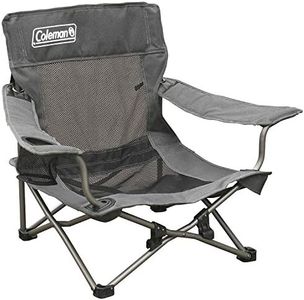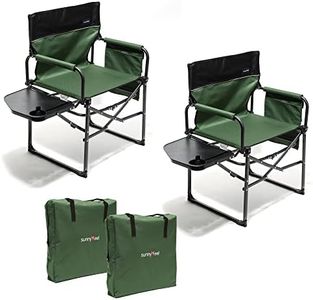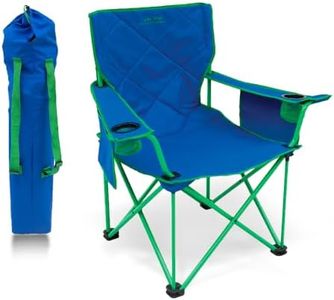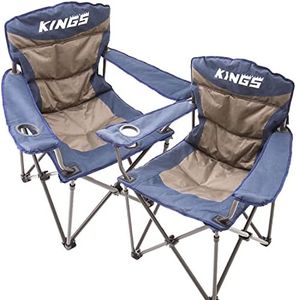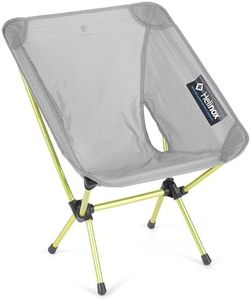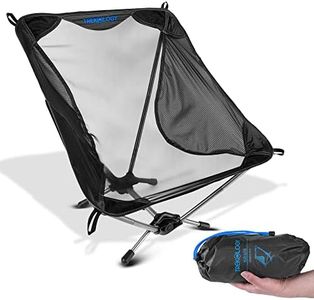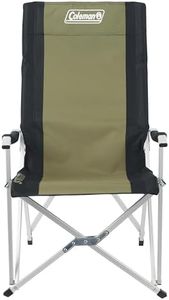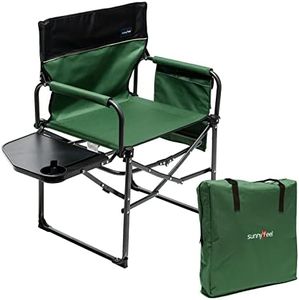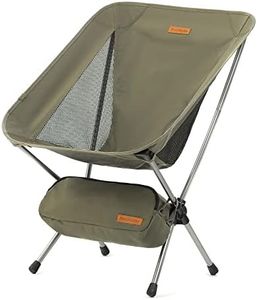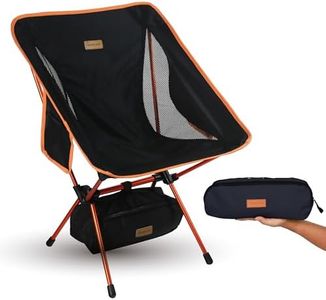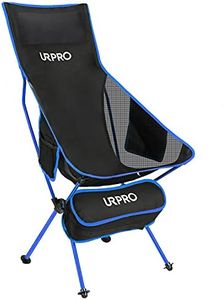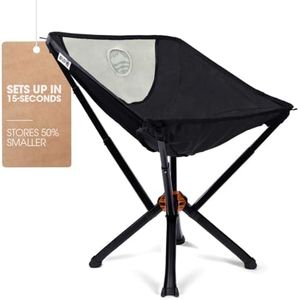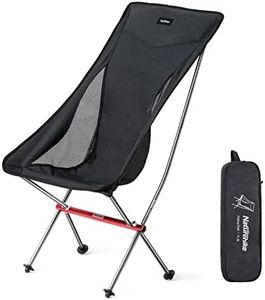We Use CookiesWe use cookies to enhance the security, performance,
functionality and for analytical and promotional activities. By continuing to browse this site you
are agreeing to our privacy policy
10 Best Camp Chairs
From leading brands and best sellers available on the web.By clicking on a link to a third party's website, log data is shared with that third party.
Buying Guide for the Best Camp Chairs
Choosing the right camp chair can make your outdoor adventures much more comfortable. When picking a camp chair, think about where and how often you’ll use it. The right chair should match your comfort needs, how easy it is to carry, and how durable it is for your activities. Start by considering your typical use scenario—will you be hiking and carrying the chair long distances, or using it mostly at car campsites or backyard gatherings? Assess your needs, then focus on the key features that distinguish chairs to find the best match for you.Weight and PortabilityWeight refers to how heavy the chair is, and portability is how easy it is to bring the chair with you. Why is this important? If you need to carry your chair for long distances, such as when backpacking or hiking, a lightweight and compact chair is essential. On the other hand, if you are just moving it from your car to a campsite, a heavier chair may still work. Chairs can range from ultralight models, great for backpacking but often with less padding and lower weight limits, to heavy, sturdy chairs better suited for car camping. Consider how far and how often you need to carry the chair—if portability is your main need, go for the lowest possible weight and the most compact folding design suitable for your comfort.
Weight CapacityWeight capacity means the maximum weight the chair can support safely. This spec is important for your safety and to ensure the chair lasts longer. Camp chairs typically support users in the range of 200 to 400 pounds, with some heavy-duty chairs accommodating even more. If you’re on the lighter side, most chairs will work, but if you need extra support, look for models with a higher weight capacity. Always check for a capacity that easily covers your body weight and consider a higher-rated chair if you want more durability and stability.
ComfortComfort is all about how the chair feels when you sit in it—this covers things like seat width, back support, height from the ground, and padding. Comfort is key if you plan to spend a lot of time sitting, like when relaxing at camp or attending outdoor events. Some chairs offer basic seating support, while others have reclining backs, headrests, armrests, or extra padding. If you mostly sit briefly or prioritize compactness, a minimal chair may suffice. For long relaxation periods or if you have back issues, seek ergonomic designs with more support and cushioning.
Durability and MaterialDurability depends on the materials used for the chair’s frame and seating fabric. This spec matters if you want the chair to last through rough use and varying weather. Cheaper chairs might use thinner metal or low-grade plastics, while more durable ones use aluminum or steel frames and ripstop or coated fabrics. Evaluate how much rough use and exposure your chair will handle—if you’re camping frequently or in tough conditions, prioritize higher-quality materials, even if it adds a bit of weight.
Ease of Setup and Pack DownThis refers to how quickly and easily you can unfold the chair for use and fold it back down for transport. Some chairs are pop-up style and open in seconds, while others require a few more steps. Ease of setup is important if you want a hassle-free experience, especially in poor weather or after a tiring day. Test how quickly you can set up the chair and pack it away—if you want ultimate convenience, choose a model with a simple mechanism and minimal pieces.
Extra FeaturesExtra features can add versatility and convenience. These might include cup holders, side tables, storage pockets, and even sun shades. While not essential for everyone, they can improve your experience if you like having drinks, books, or gear handy while relaxing. Consider which features will actually improve your camping comfort and pick according to your needs and usage style.
